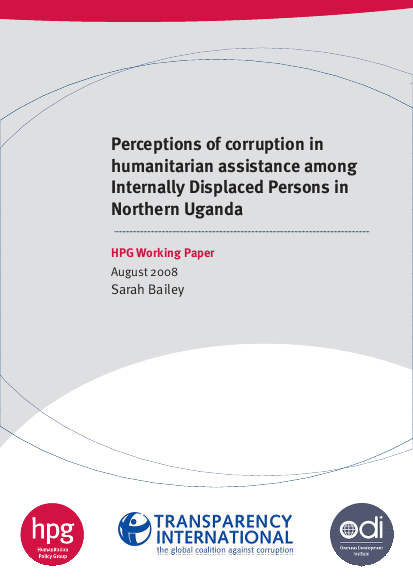
Transparency International’s definition of corruption, ‘the abuse of entrusted power for private gain’, encompasses not only fraud, embezzlement and contract kickbacks, but also a range of non-financial forms of corruption. Such corruption is particularly prevalent in emergency settings, where humanitarian interventions occur in the midst of a myriad of challenges: damaged infrastructure, weak or absent rule of law, insecurity, endemic corruption, immense needs and pressure to intervene rapidly. It can include the manipulation or diversion of humanitarian assistance to benefit non-target groups; the allocation of relief resources in exchange for sexual favours; preferential treatment for family members or friends; and the coercion and intimidation of staff or beneficiaries to turn a blind eye to or participate in corruption. These corrupt practices are difficult to track, document and control.
Despite recent pushes within the humanitarian industry for increased participation, accountability and transparency, affected populations still lack power within the assistance process and access to the agencies that assist them. This distance between aid agencies and beneficiaries, combined with the limited attention of aid agencies to non- financial forms of corruption (with the notable exception of sexual exploitation), means that the perceptions of affected populations about corruption in the assistance process are often not recognised, understood or acted upon. This report summarises a case study on perceptions of corruption in humanitarian assistance among internally displaced persons (IDPs) in Northern Uganda.